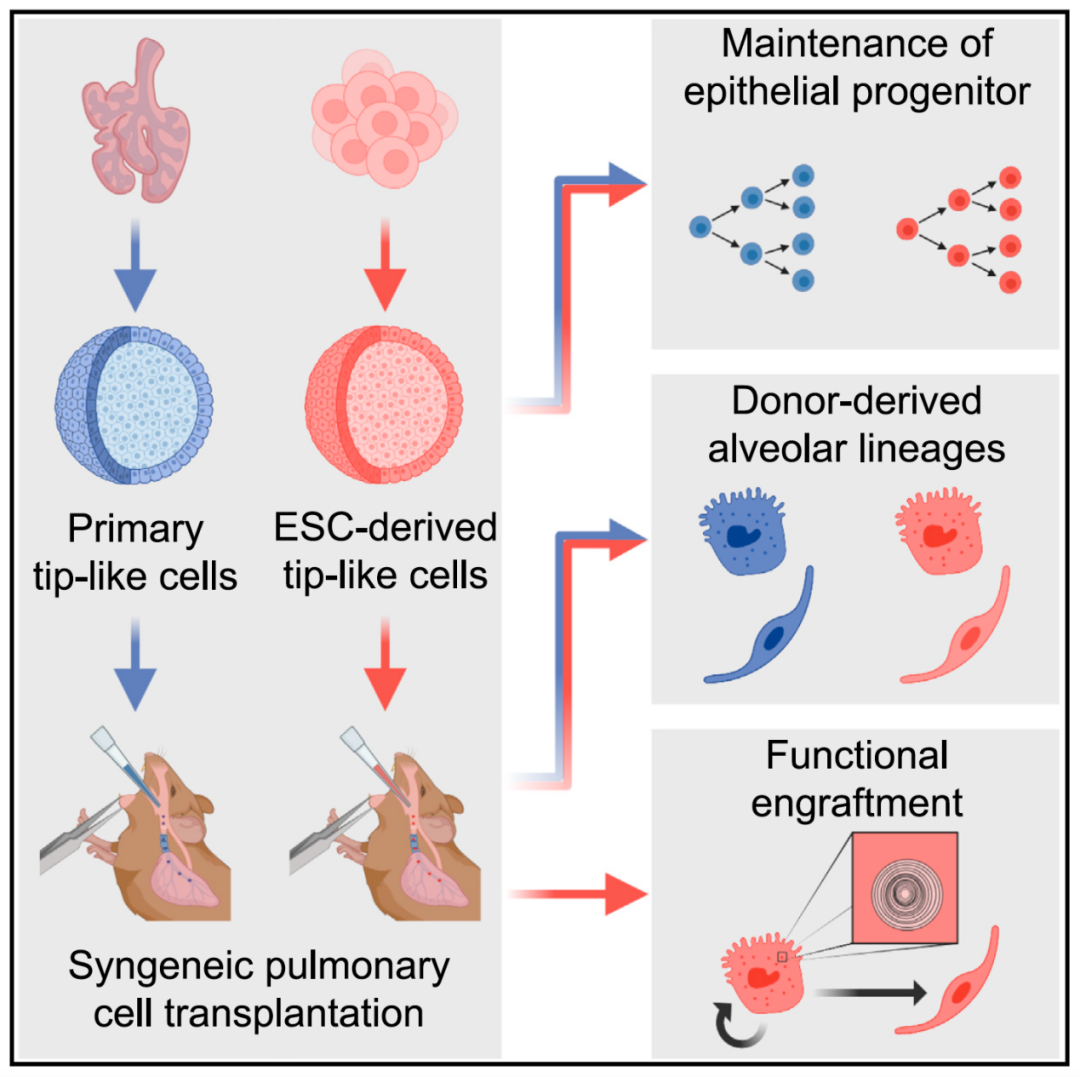
Source: BioArtMED
Acute damage to the distal lung epithelium caused by COVID-19 or chronic lung disease has caused many deaths worldwide, and if it can be reconstructed using pluripotent stem cells (PSC), it will be promising to treat lung injury. Primary cells (tip-like cells) isolated from the distal end of mouse fetal lung buds can be transplanted into the alveolar [1], but for humans, this method is difficult to apply due to the difficulty in obtaining tip-like cells from autoembryo, and the cells generated by PSC may solve the problem of cell source.
Recently, A research team led by Darrell N. Kotton from Boston University published a paper in Cell Stem Cell entitled Durable alveolar engraftment of PSC-derived lung epithelial cells The article into immunocompetent mice developed a set of methods that can directly differentiate mouse embryonic stem cells (ESC) into tip-like lung epithelial progenitor cells, which can generate AT1 and AT2 similar cells after transplantation into recipient mice, which can last for at least 6 months. And they are similar to the endogenous cells at both the transcriptional level and the functional level.

To obtain PSC-derived tip-like cells for transplantation, they modeled lung development with the foregut endoderm specialized into early Nkx2-1+ primitive lung progenitor cells that would later give rise to tip-like cells, which are precursors of bronchial and alveolar epithelium. Since all lung epithelial cells express Nkx2-1, they used endogeneously labeled Nkx2-1mCherry mouse embryonic stem cell (ESC) cell lines to track, quantify, and purify ESC-generated lung epithelial cells. They stimulated ESC-derived foregut cells with WNT3A and BMP4 to induce Nkx2-1 expression, and then increased the proportion of Nkx2-1mCherry+ epithelial cells with retinoic acid (RA) and rmFGF10, and named the method WBRF protocol. They performed single-cell RNA sequencing on the epithelial cells produced by this method, and the analysis showed that this method could effectively produce early NKX2-1+ lung epithelial progenitor cells with the ability to differentiate into airway or alveolar fates.
They then differentiated these cells into TIP-like cells, and performed single-cell RNA sequencing on primary and RSC-derived cells to verify similar tip cell marker expression patterns. The analysis results showed that ESC-derived TIP-like cells had similar transcriptional programs as primary TIP-like cells. The progenitor cell characteristics can be maintained in the process of multi-generation cell culture expansion.
They next transplanted ESC-derived tip-like cells into immunodeficient mice and found that these cells continued to produce AT2 - and AT1-like cells after transplantation. The analysis also demonstrated that donor-derived cells express many genes necessary for alveolar epithelial cell function, but may require further activation to fully mature and respond to the non-sterile environment of the lungs. To further preference-free quantitative analysis of the relationship between these donor-derived cells and endogenous alveolar lineage cells at the transcriptome level, they developed a set of algorithms, single-cell type order parameters (scTOP), demonstrating that they are highly similar to each other and have alveolar cell states. Further, they demonstrated through functional experiments that donor-derived AT2-like cells are functionally similar to endogenous AT2 cells.

PSC derived lung epithelial cell transplantation
Overall, this study achieved differentiation of mouse embryonic stem cells into lung epithelial progenitor cells that can be used for transplantation and sustainably produce functional alveolar epithelial cells after transplantation, providing a basis for future cell transplantation using PSC-derived cells to treat lung-related diseases.
The original link: https://doi.org/10.1016/j.stem.2023.07.016